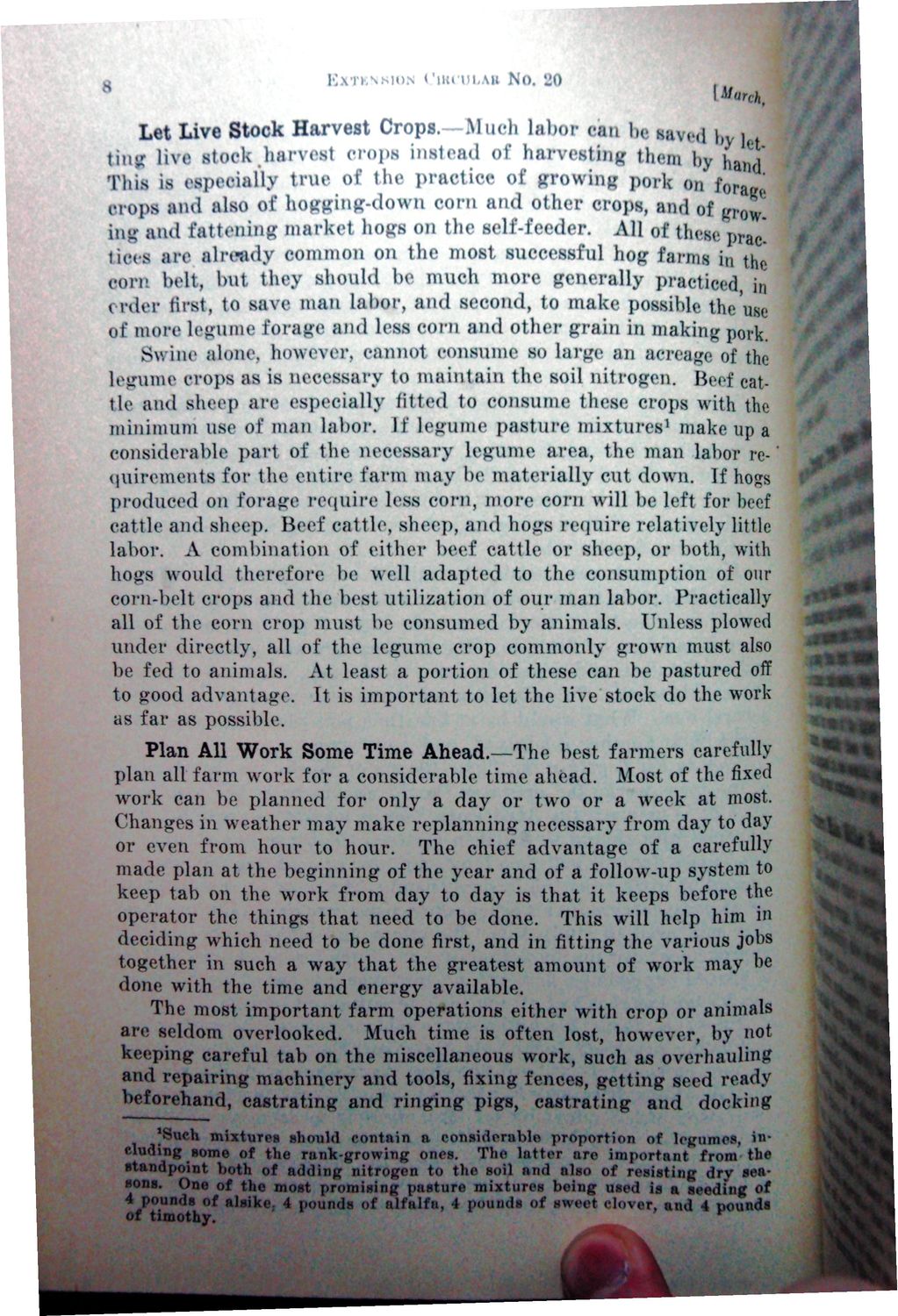| |
| |
Caption: War Publications - WWI Compilation 1923 - Article 28
This is a reduced-resolution page image for fast online browsing.

EXTRACTED TEXT FROM PAGE:
a 8 EXTKNMON < '|K« HI.AK N o . 20 I March Let Live Stock Harvest Crops.—Much labor can l»<- saved by fa I inf live stock harvest crops instead of harvesting them by hand 'his is especially true of the practice of growing pork on for»»crops and also of hogging-down corn and other crops, and of gr 0 * fog and fattening market hogs on the self-feeder. All of tin so p rac " tioea are already common on the most successful hog farms in the corn belt, but they should be much more generally practiced, in order first, to save man labor, and second, to make possible the use of more legume forage and less corn and other grain in making pork. Swine alone, however, cannot consume so large an acreage of the legume crops as is necessary to maintain the soil nitrogen. Beef cattle and sheep are especially fitted to consume these crops with the 1 minimum use of man labor. If legume pasture mixtures make up a considerable part of the necessary legume area, the man labor requirements for the entire farm may be materially cut down. If hogs produced on forage require less corn, more corn will be left for beef cattle and sheep. Beef cattle, sheep, and hogs require relatively little labor. A combination of either beef cattle or sheep, or both, with hogs would therefore be well adapted to the consumption of our corn-belt crops and the best utilization of our man labor. Practically all of the corn crop must be consumed by animals. Unless plowed under directly, all of the legume crop commonly grown must also be fed to animals. At least a portion of these can be pastured off to good advantage. It is important to let the live stock do the workas far as possible. Plan All Work Some Time Ahead.—The best farmers carefully plan all farm work for a considerable time ahead. Most of the fixed work can be planned for only a day or two or a week at most. Changes in weather may make replanning necessary from day to day or even from hour to hour. The chief advantage of a carefully made plan at the beginning of the year and of a follow-up system to keep tab on the work from day to day is that it keeps before the operator the things that need to be done. This will help him in deciding which need to be done first, and in fitting the various jobs together in such a way that the greatest amount of work may be done with the time and energy available. The most important farm operations either with crop or animals are seldom overlooked. Much time is often lost, however, by not keeping careful tab on the miscellaneous work, such as overhauling and repairing machinery and tools, fixing fences, getting seed ready beforehand, castrating and ringing pigs, castrating and docking *Such m i x t u r e ! should contain a considerable proportion of legumes, in* eluding some of the rank-growing ones. The latter are important from the standpoint both of adding nitrogen to the soil and also of resisting d r y seasons. One of the most promising pasture mixtures being used is a seeding of 4 pounds of alsike. 4 pounds of alfalfa, 4 pounds of sweet clover, and 4 potmdi of timothy.
| |